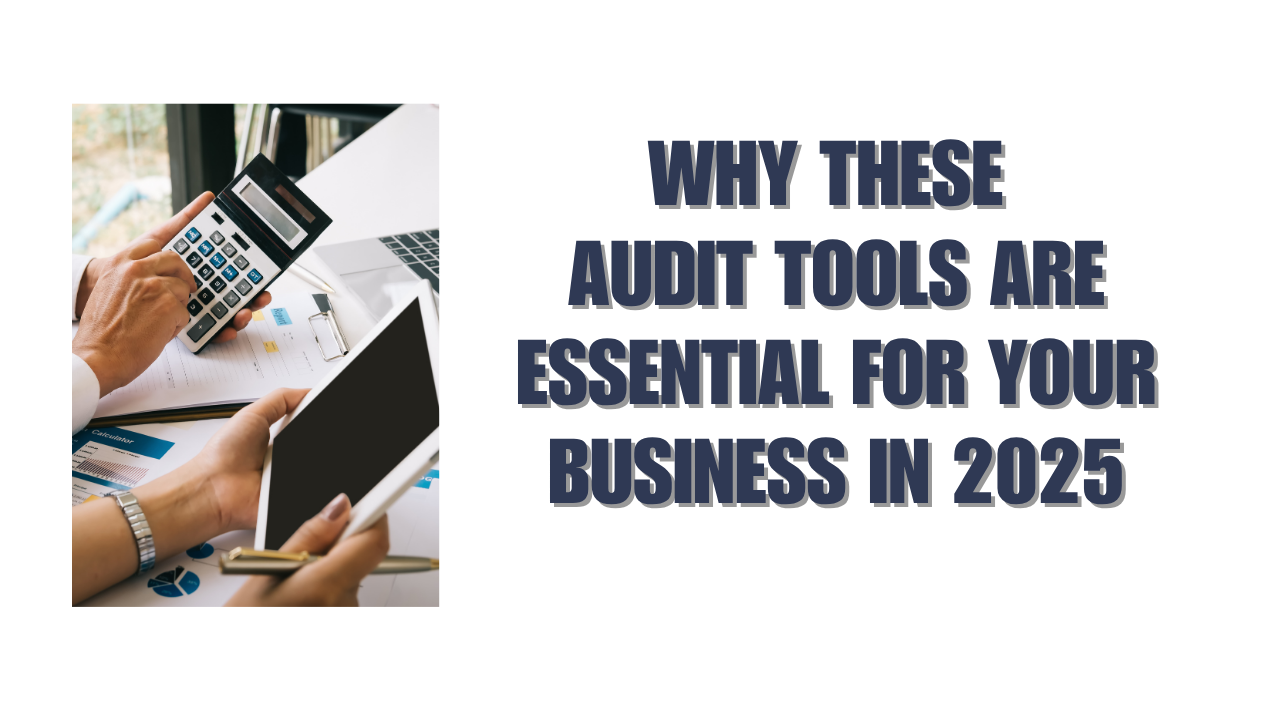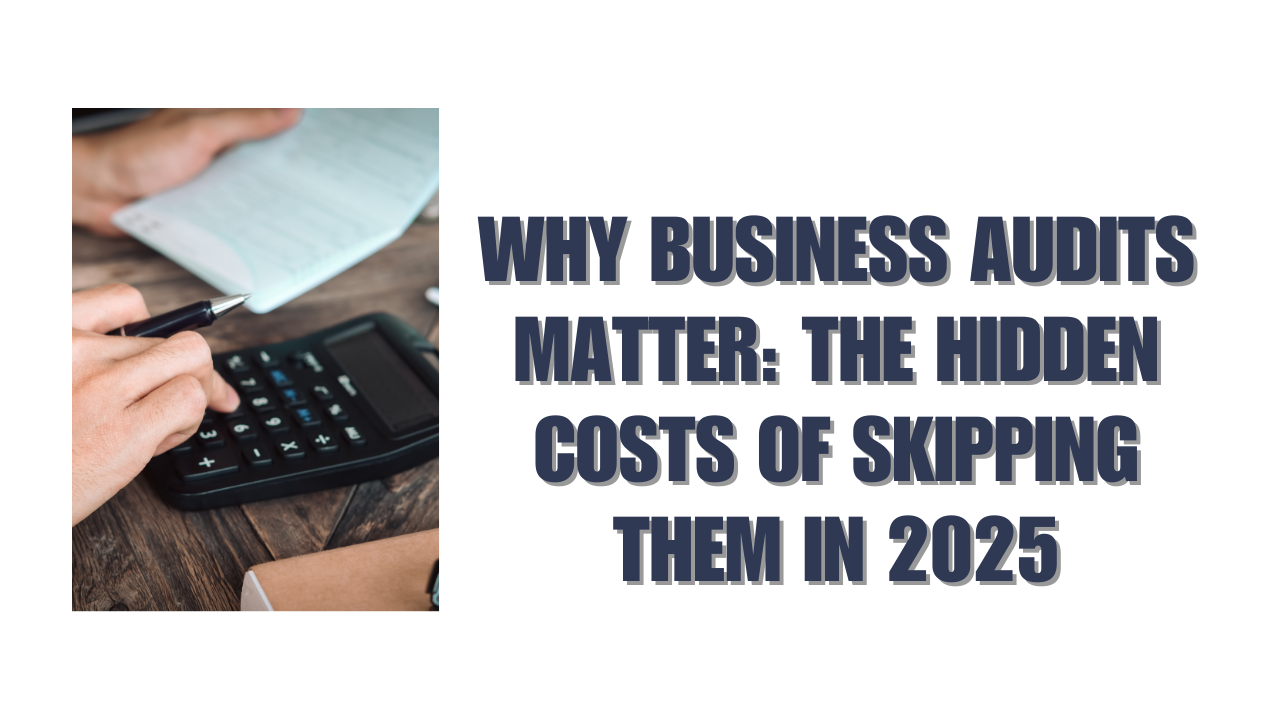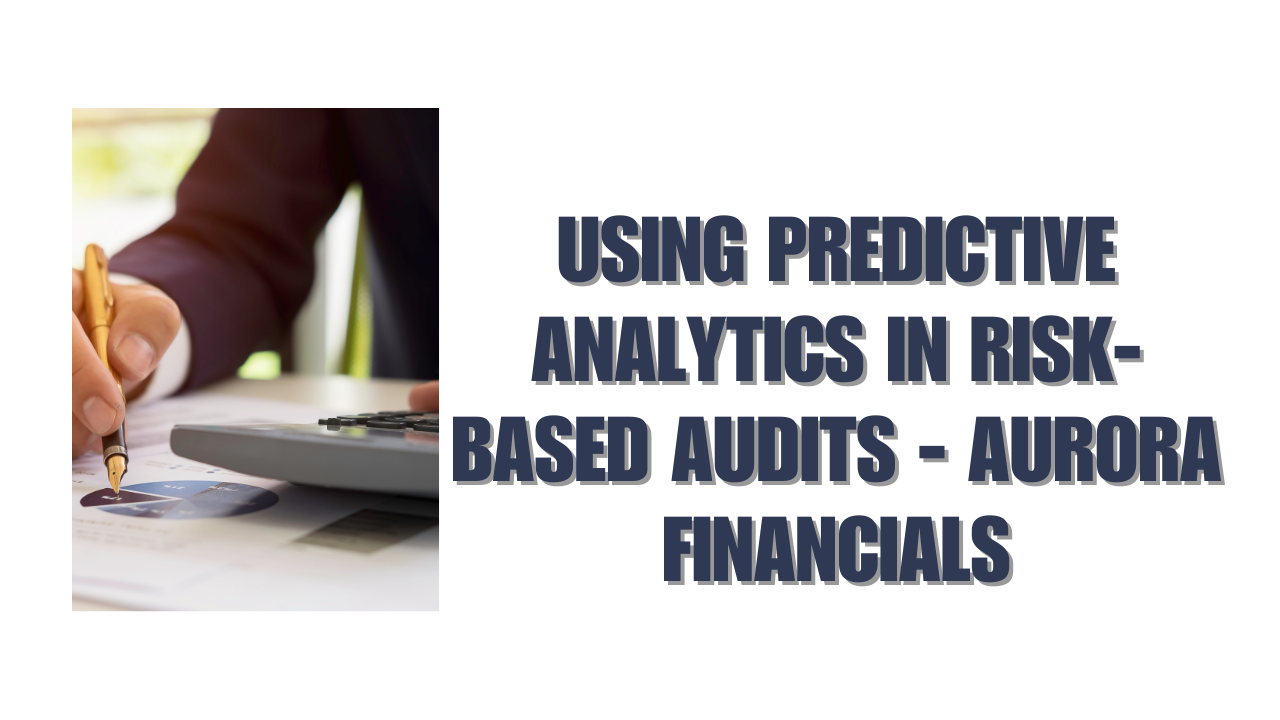Business operations thrive with audit tools, according to BDO, with 84% of finance leaders backing this claim. The audit landscape has altered the map substantially over the last several years, and these numbers tell the story.
AI powers 66% of audit professionals to speed up their work. Audit tools and techniques continue to evolve faster to tackle modern business challenges. Teams that use advanced tools have cut manual data-entry errors by up to 90%, as revealed in a European Journal study. The right audit tools can deliver true value, whether you manage compliance requirements or evaluate IT systems. Audit managers in 2025 need tools that optimize processes and handle growing regulatory complexity.
This piece will show you why these audit solutions matter now more than ever. You’ll learn which features really count and how to pick the perfect options for your business needs. We’ve also lined up eight powerful tools to change your audit processes, plus tips to sidestep common implementation pitfalls.
Why audit tools are critical for businesses in 2025
The audit world looks completely different now compared to when manual processes ruled. Companies today face new challenges that make advanced audit tools necessary for survival. Studies show 77% of companies suffer from complex compliance requirements that hurt their growth in multiple areas. This explains why modern audit solutions have become indispensable.
The rise of automation and AI in audits
The business world’s move from “digital age” to “AI age” has altered the map of how companies handle audits. Artificial intelligence exists today as a reality that changes financial oversight and risk management. So 70% of audit professionals know they must improve their AI skills next year just to stay relevant in their careers.
Old-style auditing depended on sampling – looking at small data chunks to make bigger assumptions. But AI-powered audit tools now analyze complete datasets without any sampling restrictions. This complete approach lets auditors:
- Find patterns and unusual items that sampling might miss
- Handle huge amounts of data more accurately
- Think strategically instead of doing repetitive work
AI doesn’t replace human auditors – it increases their abilities. Automation takes care of routine tasks while auditors focus on professional judgment and connecting dots beyond numbers. This change shows how audits bring new value to organizations.
Increasing regulatory complexity
Complex regulations make it harder to create clear paths from strategy to risk and compliance management. To name just one example, by mid-2025, businesses must handle growing regulatory differences while dealing with calls to override state laws and global deregulation.
Tech regulations change faster now. Over 50% of organizations list cybersecurity and data protection as their top concerns. Nearly 90% of respondents say increased compliance complexity hurts their ability to run and maintain IT systems properly.
Audit tools with built-in regulatory intelligence help companies navigate these challenges. These solutions keep businesses updated on changing regulations across regions and provide frameworks that adapt to new rules quickly.
Need for live insights and risk detection
Maybe even the biggest change in auditing comes from moving away from looking back to getting live intelligence. Modern audit tools watch continuously and catch problems as they happen instead of finding them months later during yearly reviews.
This live approach brings several vital benefits:
- Teams fix problems within hours instead of waiting months for annual reviews
- Risk warnings appear early before issues grow
- Analytics predict potential problems before they happen
Kraft Heinz shows how this works. Their live analytics system found that about 5% of purchase orders came after receiving goods or invoices in one business unit. This discovery led to immediate improvements.
Live audit tools help organizations move from reacting to preventing problems. These platforms watch transactions constantly by using advanced analytics. They spot emerging risks and let companies respond quickly before small issues become big problems. This capability matters more as businesses face clever fraud schemes and complex compliance rules.
Key features to look for in modern audit tools
Choosing the right audit tools in 2025 means knowing which features bring the most value to your organization. Today’s audit solutions can turn old-school processes into quick, evidence-based operations. Let’s get into the key features you should look for when picking audit tools for your business.
Automation and evidence collection
Collecting evidence by hand takes up most of the time in auditing. Companies that use automated evidence collection cut their prep time by 30% and work 40% faster. These big improvements come from getting rid of repetitive tasks that eat up audit resources.
Good audit automation should:
- Schedule evidence requests on its own to free auditors from follow-ups
- Add timestamps to evidence submissions right away to keep records accurate
- Connect controls data across the platform to show clear links between controls, frameworks, and evidence
- Create standard report formats for consistency
Teams can focus on strategic analysis instead of paperwork when these processes run on their own. More than that, automated evidence collection keeps things consistent and helps organizations get closer to real-time results.
Real-time dashboards and alerts
The days of waiting weeks for audit insights are over. Modern tools come with smart dashboards that turn raw data into applicable information. Research shows that AI-enhanced audit methods spot threats in minutes or hours instead of weeks or months.
The best dashboards show audit data through charts, graphs, and tables that help you spot trends and unusual patterns quickly. Users can pick the KPIs that matter most to their business needs with customizable views.
The most useful feature is setting up alerts that tell stakeholders about possible issues right away. These alerts let teams jump on compliance changes or new risks as soon as they pop up.
Integration with existing systems
Audit tools need to work naturally with your current tech setup. Look for options that connect right out of the box with common business apps and offer open APIs to link with any tool or service.
Integration cuts out double data entry, which makes audits more accurate and efficient. Your audit data should connect with ERP, QMS, EHS, and MES tools of all sizes to fit into the bigger picture of how your business runs.
Security and compliance standards
Since 94% of companies have dealt with cloud security issues, strong security features are a must. Your audit tool needs role-based access controls, encryption, and regular backups to keep sensitive information safe.
The solution you pick should follow rules like GDPR, HIPAA, or PCI-DSS based on your industry. It’s just as important to keep complete audit trails that show who did what, when they did it, and what changed.
Scalability for growing businesses
Your audit solution should keep up as your company grows. The best tools handle more data and complexity without slowing down. This becomes really important as businesses face more internal and external audits across different compliance frameworks.
Flexible solutions work well with lots of users and big datasets. Picking a tool that grows with you cuts down the long-term costs of running your compliance program, even as your company gets bigger.
8 essential audit tools your business should consider
Modern audit environments need the right tools to boost efficiency and compliance. A thorough review of many solutions helped identify these top audit tools for 2025 that solve current business challenges.
1. DataSnipper – Excel-based AI audit automation
DataSnipper makes audit workflows better by combining with Excel. It uses AI-powered evidence matching and intelligent OCR. Trusted by all Big Four firms and 600k+ users worldwide, it removes repetitive manual work so teams can analyze rather than handle paperwork. The Financial Statement Suite includes tick marking and validation capabilities that work well for external audits, tax advisory, and government audits.
2. Glasscubes – Client collaboration and engagement
Glasscubes makes collecting client information easier through automated reminders that follow up with users for documentation. This cloud-based portal serves as a central hub for client interactions and messages. Companies that use Glasscubes see a 40% increase in customer response rates and 50% faster response times compared to regular email methods.
3. AuditBoard – Enterprise risk and compliance
AuditBoard’s AI-first GRC platform links risks, controls, frameworks, and issues in one system. Companies using AuditBoard complete risk assessments 33% faster and reduce redundant controls by 64%. The user-friendly platform helps frontline employees participate without training to add risks, ratings, and manage action plans.
4. Hyperproof – Real-time compliance tracking
Hyperproof helps teams optimize compliance operations through automation. Users see a 60% improvement in audit preparation. The platform connects audit requests to controls and evidence automatically, letting organizations reuse work for future audits. Compliance professionals report 70% higher productivity through combined risk management.
5. MetricStream – Governance and risk management
MetricStream’s GRC solution manages all governance, risk, and compliance processes centrally. The platform provides live insights into risk and compliance status through workflow automation and better accountability. It combines smoothly with multiple regulatory content providers, compliance data sources, and third-party risk assessments.
6. ADAudit Plus – IT and Active Directory auditing
ADAudit Plus monitors Active Directory, file servers, and Azure environments completely. The platform includes account lockout analysis, live change notifications, and file integrity monitoring. It spots over 25 specific AD attacks including Kerberoasting and DCSync while creating audit-ready reports for SOX, PCI DSS, HIPAA, and GDPR compliance.
7. Workiva – Cloud-based reporting and collaboration
Workiva brings critical functions together in a secure environment with intelligence and automation. The platform serves 6,400+ global companies by combining financial reporting, sustainability, internal audit, and risk management with built-in controls and automatic audit trails. Users get clear data, better efficiency, and reliable outcomes.
8. Diligent – Quality insights and audit workflows
Diligent’s Audit Management solution keeps documentation in one place and sends automated emails and reminders throughout the audit cycle. Teams maintain a central library to access past activities, reports, and templates quickly. The platform improves compliance through automated controls testing and scheduled follow-ups.
How to choose the right audit tool for your business
Your business needs should guide your choice of an audit tool. Recent data shows that 32% of businesses paid more than $1.71 million in audit-related financial liabilities in 2024. This makes your choice a vital part of your compliance strategy.
Define your audit goals and team size
Start by understanding what your organization needs from an audit management system. Look at the problems in your current audit processes. Figure out if you need financial, operational, or compliance audits and how many people will use the system. A clear audit plan should define the scope, calculate materiality, and set goals you can measure. Pick tools that match your organization’s bigger picture, whether you want financial transparency, regulatory compliance, or less risk.
Evaluate integration with your current tech stack
Check if the new solution works with your existing IT setup before you commit. Good audit software should merge with your other systems naturally. This cuts down on repeated data entry and makes your data more accurate. Look at how well potential tools would work with your current systems to create one unified tech ecosystem. The way these tools connect with ERP, QMS, and other key platforms can make a big difference in how well they work.
Consider industry-specific compliance needs
Your choice must meet your industry’s requirements. Healthcare companies need HIPAA compliance, while financial firms must follow strict data storage rules. Look for tools you can customize to meet regulatory requirements or common standards like ISO 27001. Industry-focused audit software brings real benefits. You get more accurate audits that match your operational risks and faster compliance reports through ready-made templates.
Balance cost with long-term ROI
Look at both what you’ll pay now and what value you’ll get later. Do a full cost analysis that includes licenses, setup, training, and maintenance. Good audit management tools save money through better work efficiency. Don’t choose based on price alone – cheaper tools often miss key features like compliance tracking or good support.
Common mistakes to avoid when adopting audit tools
Organizations repeatedly fail at implementing audit tools because of predictable mistakes. Your business can save time and resources by knowing these common pitfalls when adopting new audit technologies in 2025.
Choosing based on price alone
Many organizations pick the cheapest solution without thinking about long-term value. This short-sighted approach leads to inefficient operations that end up costing nowhere near more over time. Premium audit solutions cut preparation time by 30% and work 40% faster, making them more economical despite higher original investment. Free audit tools offer only simple security assessment features without regular threat intelligence updates. This becomes dangerous when small businesses face average data breach costs between $120,000 and $1.24M.
Ignoring training and onboarding needs
Organizations underestimate training requirements during audit tool implementation. Training should be part of your project right from the start. Research shows that training directly affects how useful and easy new tools appear to users. Poor onboarding leads to inconsistent usage due to lack of buy-in. New technologies fail to merge with existing systems, which means internal processes don’t improve.
Overlooking data security and privacy
Sensitive financial data in insecure legacy systems becomes a ticking time bomb. Organizations that overlook security risk GDPR non-compliance, data breaches, and permanent damage to client trust. Companies that skip security audits become vulnerable to cyber-attacks and data leaks. These incidents cause huge financial losses, legal issues, and lasting reputation damage.
Not planning for scalability
Audit needs grow as businesses expand. Legacy tools struggle with increased volume and complexity. Your audit software should handle growing datasets and multiple users without slowing down. Teams waste time on manual processes without proper scalability planning. They struggle with cross-border or multinational demands. The software should adapt to increasing audit volumes while staying efficient as compliance requirements change.
Conclusion
Modern audit tools have changed the audit landscape from manual processes. In this piece, we’ve explored how audit tools provide transformative benefits through automation, live insights, and reliable compliance capabilities. Of course, businesses that adopt these technologies gain the most important advantages in efficiency, risk management, and regulatory compliance.
You must match the right audit solution to your specific needs. Each option needs assessment against your audit goals, team structure, existing technology, and industry requirements. The eight tools we’ve highlighted are among the most powerful solutions available today. Each tool offers unique strengths for different audit scenarios.
Organizations often make mistakes that can get pricey. They select tools based only on price, underestimate training needs, neglect security, or overlook growth requirements. These challenges become manageable with good planning and the right tool selection.
AI and automation technologies will drive audit tools to evolve further. Companies that adapt to these changes will benefit from better efficiency, risk detection, and compliance frameworks. Your company’s success may depend on knowing how to make use of these tools in our complex regulatory environment.
Companies that adopt digital transformation will lead the future of auditing. The right audit tools do more than streamline processes – they change how organizations handle risk and compliance. Your trip to audit excellence starts when you choose tools that match your needs and grow with your business.
FAQs
Q1. What are the key benefits of using modern audit tools in 2025?
Modern audit tools offer automation, real-time insights, and improved compliance capabilities. They can reduce manual data entry errors by up to 90%, provide continuous monitoring for early risk detection, and help navigate complex regulatory landscapes more efficiently.
Q2. How do AI and automation impact the auditing process?
AI and automation in auditing allow for analysis of entire datasets without sampling limitations, identify patterns and anomalies more effectively, and free up auditors to focus on strategic thinking rather than repetitive tasks. This shift enables more comprehensive and accurate audits.
Q3. What features should businesses look for in audit tools?
Essential features include automation for evidence collection, real-time dashboards and alerts, integration with existing systems, robust security and compliance standards, and scalability to accommodate business growth and increasing data volumes.






